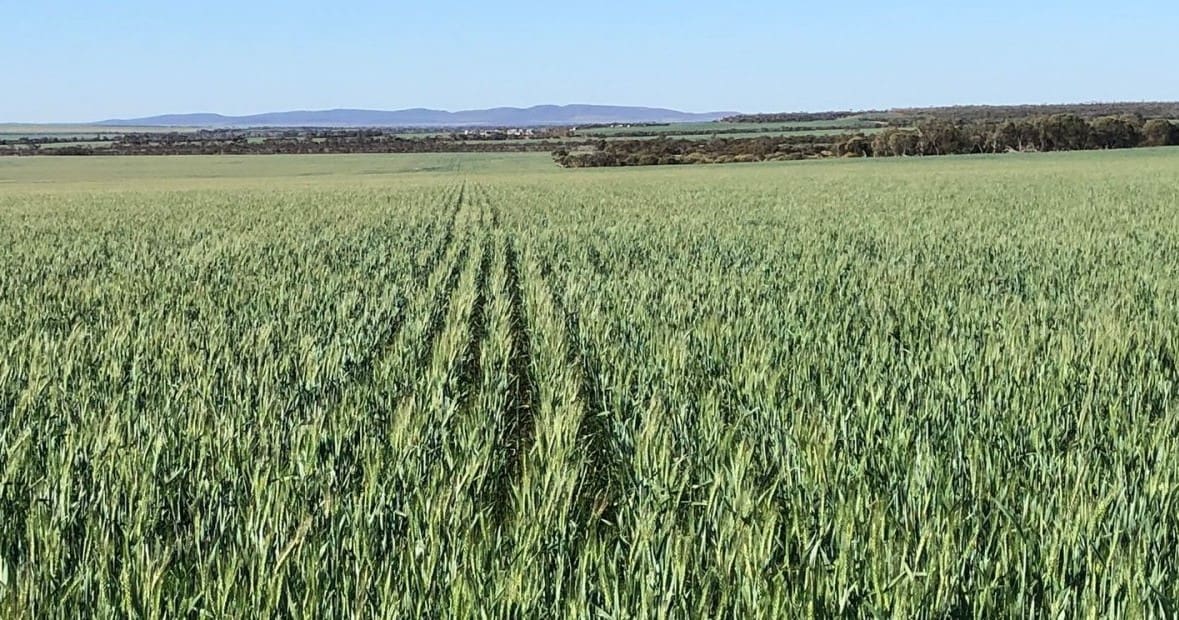
A dry end to the growing season has trimmed some yield potential from crops in WA. This paddock of Magenta wheat was planted early May and will be harvested on 22 October with yield estimated at 1.5t/ha. Photo: Bill Crabtree
SOME short covering in northern markets has lifted values for nearby wheat and barley, while prices in the south are mostly steady to slightly lower as yield prospects consolidate.
A lack of grower selling, steady export demand for wheat, and the likelihood that Australian barley will price into the next Saudi Grains Organization (SAGO) tender, as well as mixed prospects for the Australian crop, are all supporting prices.
In its September crop report released on Friday, the Grain Industry Association of Western Australia (GIWA) forecast the state’s wheat crop at 8.45 million tonnes (Mt), and barley at 3.64Mt.
These figures are down 5pc and 2pc respectively from GIWA’s August estimates, and reflect a dry start to spring in Australia’s biggest grain-producing state.
Yield prospects are highly variable in Queensland, where harvest is under way, and in the far north of New South Wales, as well as in the northern reaches of South Australia’s grainbelt.
Countering that are good to excellent yield prospects in Victoria, higher-rainfall zones of SA, and NSW from about Narrabri and Coonamble south.
| This week | Last week | Change | |
| Barley Downs Oct | $335 | $290 | Up |
| Barley Downs Jan | $250 | $250 | Steady |
| Barley Melbourne Oct | $235 | $235 | Steady |
| Barley Melbourne Jan | $235 | $230-$235 | Steady |
| Wheat Downs Oct | $305 | $330 | Down |
| Wheat Downs Jan | $283 | $270 | Up |
| Wheat Melbourne Oct | $305-310 | $311 | Down |
| Wheat Melbourne Jan | $290 | $293 | Down |
| Sorghum Downs Oct | $305 | $320 | Down |
| Sorghum Downs Mar-Apr | $295 | $290 | Up |
Table 1: Indicative delivered grain prices in AUD per tonne.
Northern trade thin
Consumers on the Darling Downs of southern Queensland are buying as little as possible as they wait for harvest pressure to kill the inverse which refuses to die in the nearby market.
Keeping it alive is limited spot buying from feedlots and other feed millers who are weaning themselves off interstate barley and on to local grain once harvest ramps up in the next fortnight or so.
“There’s not a lot of demand from the consumer,” Alliance Grains principal Luke Walker said.
“A lot of people are still chomping through dear grain, but there’ll be barley galore coming soon.”
Queensland’s later-sown wheat and barley crops are losing yield potential every day, and the front moving east across Australia’s grainbelt is forecast to deliver only single-digit falls on and north of the NSW border.
The odd load of barley from Victoria and southern NSW is still making its way on to the Downs for the feedlot market.
Split nearby market
Queensland’s early wheat and barley is being booked for delivery next month by up-country consumers ahead of the massive volume expected from crops in NSW once harvest gets going around Moree and Walgett.
Trade sources have said growers were reluctant to forward sell much tonnage because banks have said they would not be prepared to cover them if contracts had to be washed out at a cost to the grower.
This is a risk if heavy and successive rain fell on the crop and downgraded a significant portion to feed.
“It’s so dry out at Condamine, they could get 30 millimetres of rain and two days later, you wouldn’t know it had fallen.”
Norco trader Simon McDougall said harvest on the Liverpool Plains of northern NSW would start in November, and any growers in northern NSW or southern Queensland who were set to harvest next month were looking at a premium over new crop.
“Those that are early can see the price advantage of engaging now.
“The Liverpool Plains is still green as green, and there’s too much that can happen between now and November to see (growers) selling much now.
“Anyone who’s got crops that are two or three weeks away are a different story.”
On the Downs, the inverse on barley has blown out in the past week as buyers try to cover themselves in what looks like a split-level nearby market, and the last of the boat grain in Brisbane makes its way up the range.
The fortnight around 1 October is holding the bigger inverse at up to $50/tonne over the rest of October market before dropping to new-crop values in November.
South quiet ahead of rain
Some trade positioning ahead of early exports has provided most of the activity in a relatively quiet week in southern markets, where grower selling is thin ahead of forecast rain.
Already falling in parts of Victoria and likely to extend into South Australia and southern and central NSW tomorrow, it will bring up to 20mm to some districts.
“In the Mallee and some other places, I think there are some spots that will appreciate 15-20mm, and most growers are looking forward to this next rain into next week,” Riordan Grains Mark Lewis said.
Southern Australian new-crop levels for wheat and barley appear to have stabilised at current prices, and bookings from export and domestic customers are ticking over.
“We’re finding reasonable demand at these levels, and our barley is pricing into Saudi.”
Grain Central: Get our free daily cropping news straight to your inbox – Click here

HAVE YOUR SAY